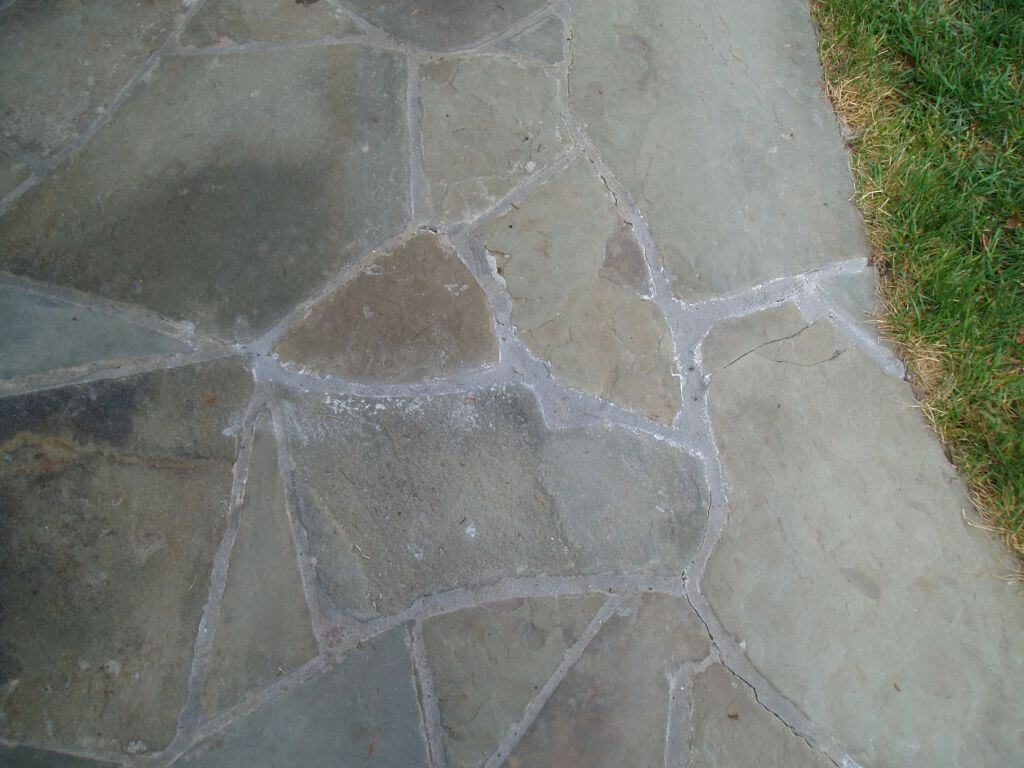

What can I do if my grout doesn’t match?
So often when grout or mortar has been placed between tiles or stones, any repairs done thereafter are a challenge to match. The human eye is instinctively drawn to the differences in color and contrast, and the repair is obvious because of the new, bright material.
In this case, the mortar that we used to replace crumbling and eroding mortar ended up being typically lighter than the ten-year-old mortar that existed.
Because old mortar between stones –and old grout between tiles– has seen months or years of water, dirt and other pigment absorption, there is no real way to match the color when it is first replaced.
But don’t worry.
The first step is to clean the area well, with high-alkaline cleaners and high-pressure hot water extraction. Next, do your repairs, attempting to use the closest color of grout you can find. In our case, because mortar doesn’t come in multiple colors, we were aware that we would be adjusting the color later.
After the grout or mortar is dry and has served it’s purpose as a stabilizing element of the masonry you wish to fix, you can add pigment to it to get a better match and trick the eye into ignoring that area.
Simply take several colors-for exterior mortar, I recommend tan, black, brown and white—mix them, and try to get the best match possible. Dab a little of the color in an inconspicuous area of the floor or outside deck to get the best effect. I use water-based acrylic paint in the quart sizes (each quart will run you between $8 and $10) and mix colors on the spot.
Grout and mortar are both famous for absorbing different colors that almost guarantee inconsistency from one area to another. If you have not sealed your mortar or grout with multiple applications of sealer, you mortar lines will have multiple colors in them. This is when the fun part comes in. The reason you have more than one color is so that you can overlay the colors in a faux paint style, dipping your brush into correlating lighter and darker colors to get the blend you’re looking for.
Because mortar and grout are porous (have you ever dropped paint in your driveway?) they soak up paint and lock them securely into the capillaries. The paint stays colorfast and also will weather and age well.
If you have any further questions about this process, feel free to email me at
les@applebycleaning.com

